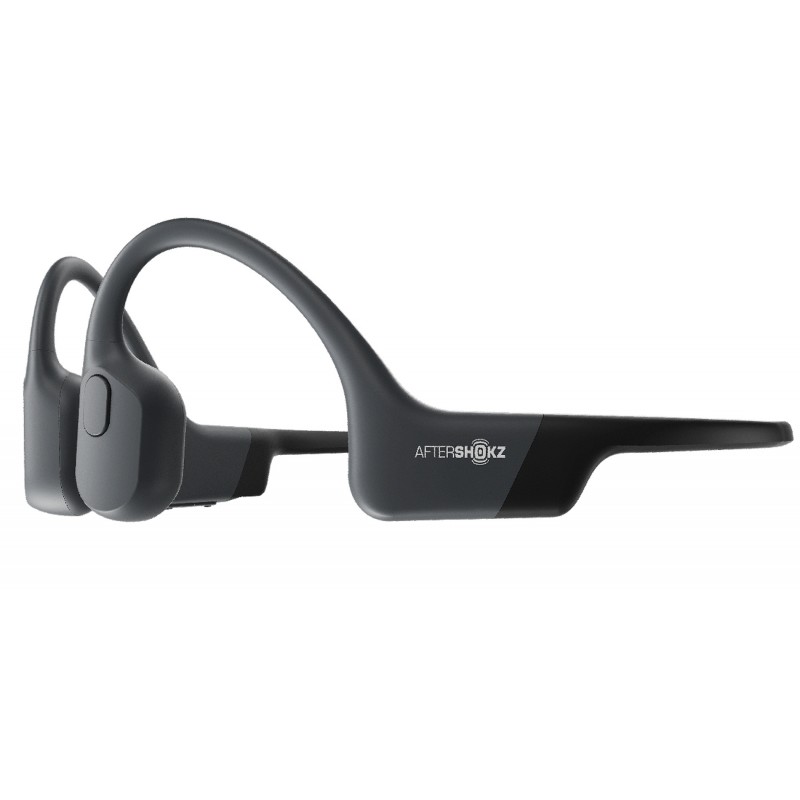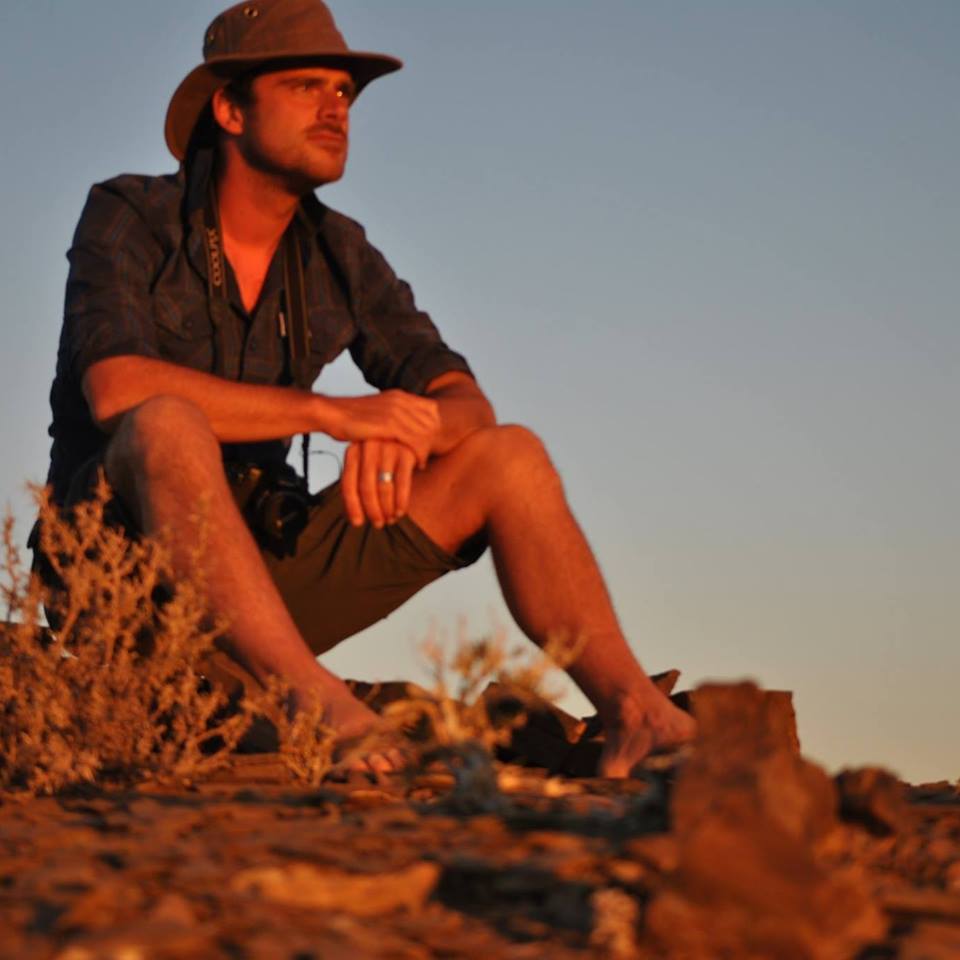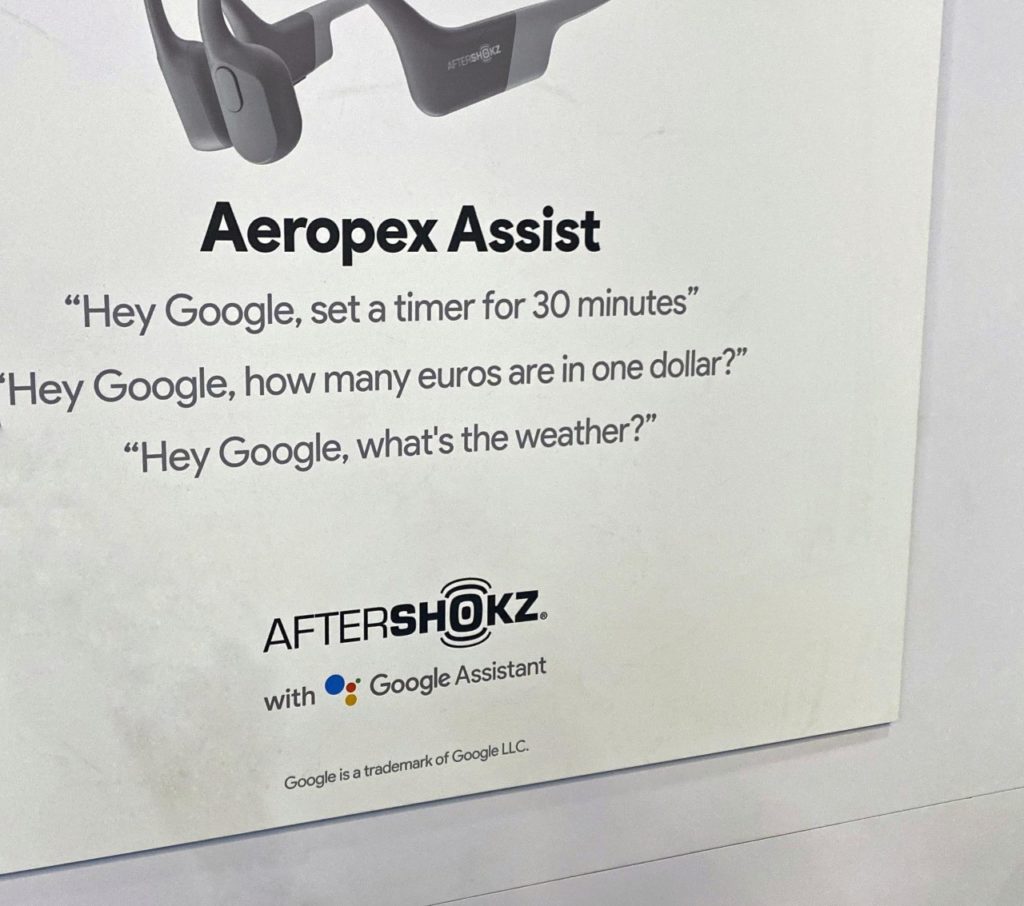No products in the basket.
Blog
AfterShokz Aeropex Mini on CES 2020 & Aeropex Assist
CES 2020 goes hand in glove with the headphones of AfterShokz. Throughout the years AfterShokz has become a regular CES customer and when visiting the AfterShokz stand you immediately know what I am talking about. CES breathes AfterShokz and AfterShokz breathes CES. Since AfterShokz uses the biggest technology fair in the world to present its newest devices and features & functionalities to the world, we are always looking forward to the next CES. CES 2020 doesn’t prove to be different and AfterShokz got two interesting news items to share with the bone conduction world: the Aeropex Mini and the implementation of Google Assistant to their headphones.
Table of Contents
The Aeropex Mini features a smaller/shorter frame
AfterShokz is known for producing some of the best wireless headphones in the world. So-called bone conduction headphones which give you an open-ear experience combined with an excellent sound. On CES 2020 we noticed their latest addition to the bone conduction fleet: the Aeropex.
What we also noticed though, and which took us by surprise, was an Aeropex Mini. Yes indeed, a mini. Just like we had an AfterShokz Trekz Titanium and an AfterShokz Trekz Titanium mini a few years ago. Although so far, for us, the frame of the Aeropex never felt to be annoying or too long, AfterShokz wants to please some of their customers looking for a smaller and shorter frame. The Aeropex Mini will suit their needs and requirements. No head size is equal so the Aeropex Mini might prove useful. Besides, the interesting thing about the Trekz Titanium Mini was the fact it offered a perfect fit for children. So maybe they are also aiming for this group tp become AfterShokz aficionados!
Small heads or children
The AfterShokz Aeropex Mini features a 9.5 mm shorter frame for a more snug fit for people having a smaller head or children. This way AfterShokz clearly accommodates a wider range of head size. I tried them on and I must say they felt like a part of my body. They sat perfectly and jumping up and down they barely moved around.

Aeropex Mini Launch Date and Price
I did ask some questions to the people at the AfterShokz stand but unfortunately a launch date and a price were not yet known. I can’t imagine though we will have to wait for months for this Aeropex Mini to be launched. I would say at most a month or two and regarding the price… expect a similar price as the one you pay for the AfterShokz Aeropex. So $149 or €169.
What they could confirm to me is that the Aeropex Mini uses the exact same bone conduction technology as the Aeropex. The only difference is the length of the frame hanging behind your head.
Aeropex Assist at your service
One new AfterShokz headphones would already be a surprise but AfterShokz made the surprise even bigger at CES 2020 with a second add-on: the Aeropex Assist. The Aeropex Assist is equipped with an extra button to summon Google Assistant. No other difference whatsoever between the current Aeropex and the Aeropex Assist. Google Assistan can be summoned by an additional button which is installed on the right transducer / ear of the headphones. This button looks similar to the call button on the left transducer. By pushing the button Google Assistant will be activated via an app on your Android or iOs phone. It will allow you to instruct Google Assistant via your voice. It shows the close partnership between Google and AfterShokz and we might expect further cooperation between the two giants. There was even a Google representative available at the AfterShokz stand to show the new Google Assistant n the Aeropex Assist. Do we need to say more?
As soon as we know more about the launch date and the price of the Google Assist www.bone-conduction.com will be the first one to let you know!

Wim Styleman is a content writer, translator, reviewer and bone conduction fanatic. Interested in the wonderful world of bone conduction since 2016. Driven by a desire to get everyone submerged into this wonderful technology, but critical and honest when he has to be as a reviewer. Only the best is good enough. He has traveled around the globe and visited various CES events. When he isn’t busy testing bone conduction devices or writing freelance translations, he is at his bike somewhere on the Belgian roads or on his touring skis somewhere in the Austrian or French Alps.

